A collective blog from the course EAT - Food Culture, Materiality and Design at HDK-Valand / Academy of Art and Design, Gothenburg University.
Don't wanna be here? Send us removal request.
Text
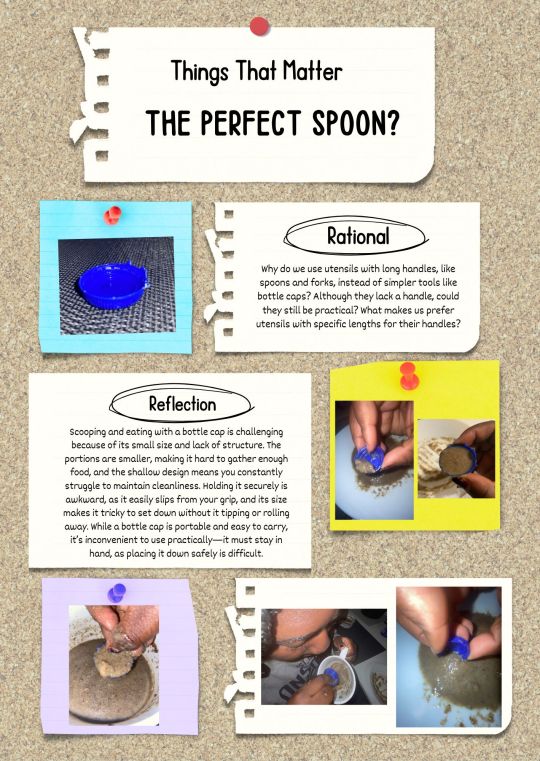
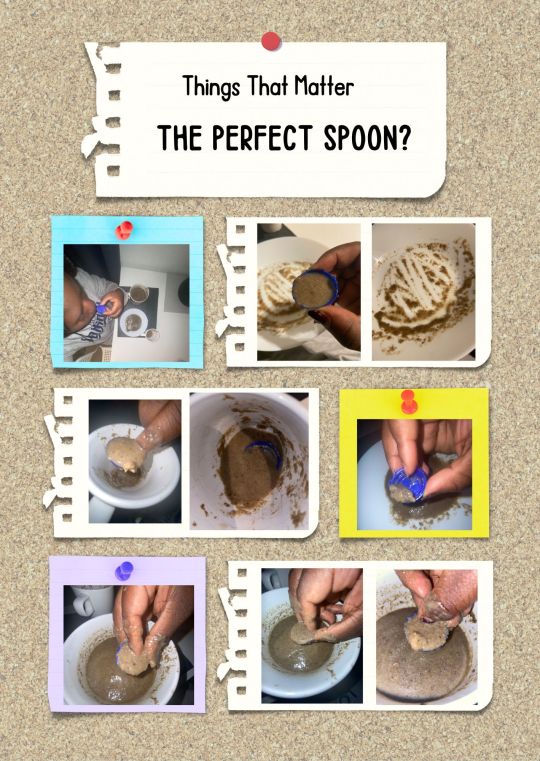
The Perfect Spoon (Doris A.)
The spoon interacts with one of the most nerve-dense parts of the body: the lips, which detect even the slightest unevenness, grain tear-out, or sharp edges. Interestingly, the word "spoon" originates from cochlea in Greek and Latin, meaning "spiral shell," as early spoons were often made from shells. Adding bones as handles marked the evolution of the spoon as we know it today.
This history and the sensitivity of the lips inspired my exploration: is a handle truly necessary for a spoon? If the oval bowl is the primary functional component, couldn’t anything serve as a spoon? Why not a bottle cap? It’s accessible, lacks a handle, but can still scoop and hold food.
My experiment proved successful: you can eat with a bottle cap. However, it’s inconvenient. Without a handle, hands get dirty, eating is slower, and the cap’s limited size reduces its practicality.
Overall, it was a fascinating experience. It would be interesting to test its effectiveness with solid foods, as my attempt involved soup.
0 notes
Text
Untitled (In your mouth, in your mind) and Sweet Dreams
I have worked with two different projects, both centered around the use of candy as a material. The first project, which I titled Untitled (In your mouth, in your mind) was made for an exhibition I had together with a few classmates. I didn’t particularly want to participate with an artwork for the exhibition but rather make a subtle intervention which interacted with my colleagues' works. This resulted in me making lollipops with the shape of the artists’ thumbs that were exhibiting their work in the gallery space. I wanted to create an intimate connection between the viewer and the artist, while also playing with their power dynamics. How will the viewer's perception and reflections shift as they simultaneously consume both the artists’ "thumbs" and their art?
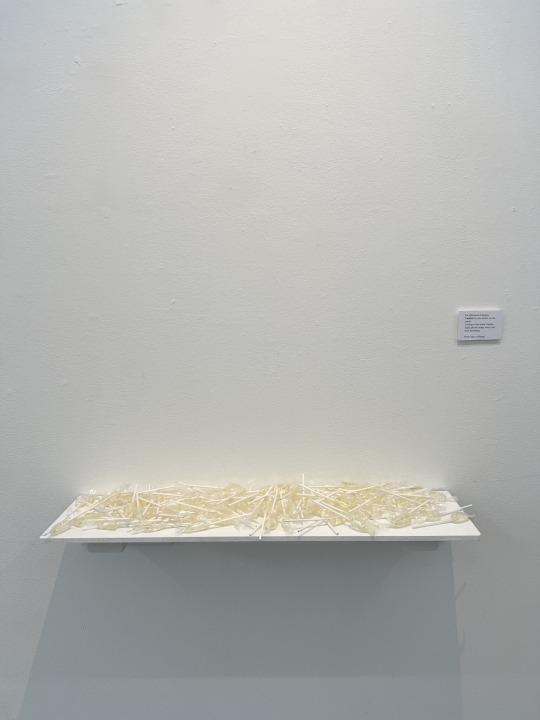
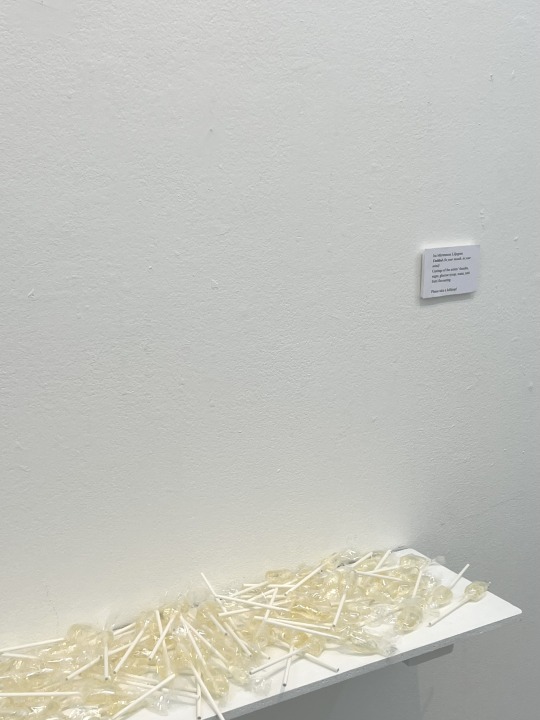
Isa Mårtensson Liljegren
Untitled (In your mouth, in your mind)
Casting of the artists’ thumbs, sugar, glucose syrup, water, tutti frutti flavouring
For my second project I worked with marshmallows as a material drawing inspiration from the phrase Sweet dreams. Reflecting both on periods in my life where I struggled with insomnia and also the softness of the material, I came to the conclusion that I wanted to make a pillow entirely out of marshmallows. Would I finally be able to sleep? Would my dreams become sweeter?
This project is still a work in progress. My current plan is to create a marshmallow pillow infused with lavender, then sleep on it for at least a week while simultaneously keeping a detailed dream journal. The work combines text with the intimacy of the bed and the dream realm as a deeply personal and private space. Eventually, I want to invite the public to eat the pillow. What do my dreams taste like?
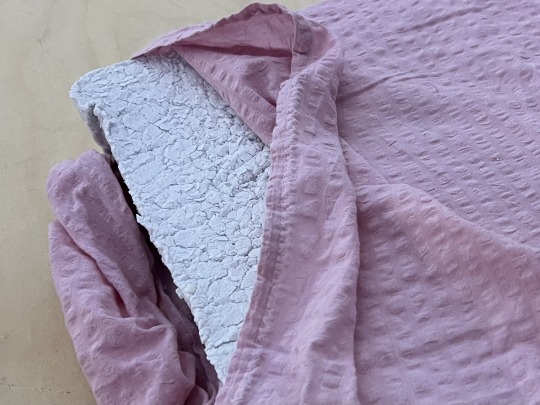
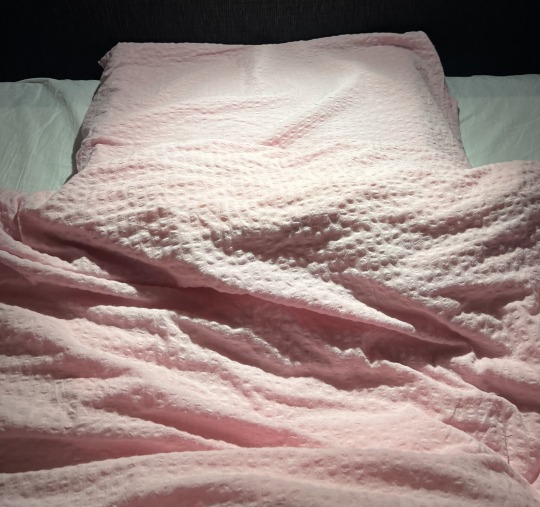
1 note
·
View note
Text
The Black Supper (By Diaan) A monochrome dinner project I planned, prepared, and hosted as part of the course EAT: Food culture, materiality, and design at HDK-Valand. ## Menu ## Starter: Black Wood-ear & Black Beans on a sauce of Caramelised Orange and Molasses, topped with Rapeseed, Sesame, and a Black Balsamic Reduction. Pizzas: 1) Black Caviar & Black Fermented Garlic with a sauce of Cuttlefish Ink and Crème Fraîche topped with a sprinkling of Black Salt. 2) Trompette de la Mort & Black Olives with a sauce of Black Truffle. Dessert: Black Chocolate & Orange Sorbet with Black Maraschino Cherries and Black Nonpareils.
#black#monochrome#dinner#thisishdk#thisishdk_valand#thisisgu#gothenburg#Sweden#food#pizza#caviar#icecream#cherries#blackgarlic#squidink#charcoal#blackbeans#mushrooom#blackmushroom#olive#sorbet#blackchocolate#chocolate#seafoodpizza#truffle#blacktruffle
1 note
·
View note
Text
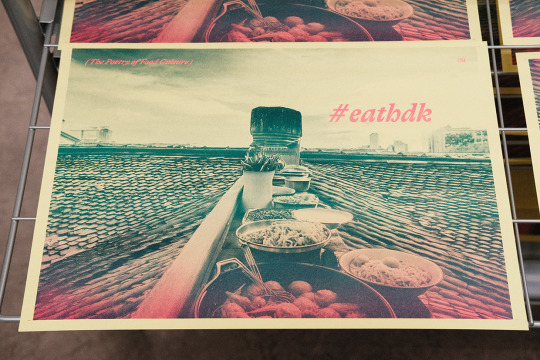
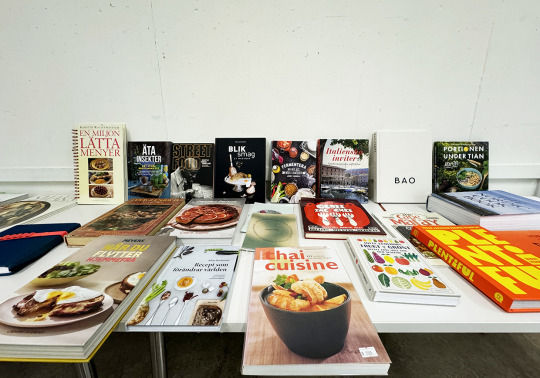
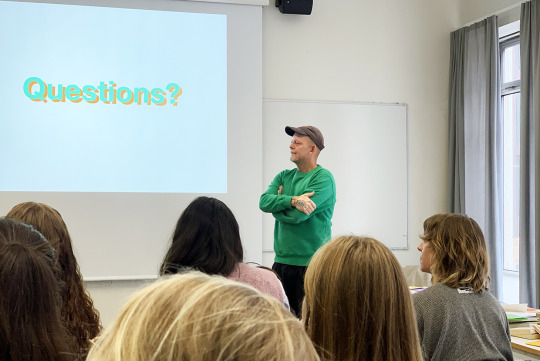
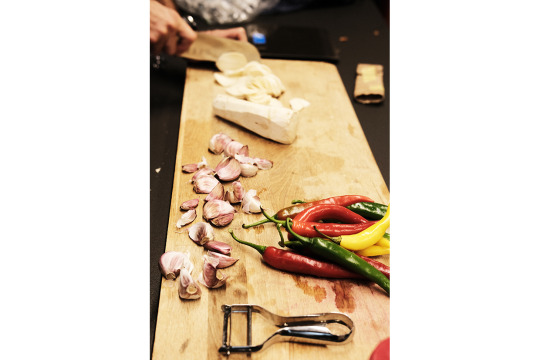
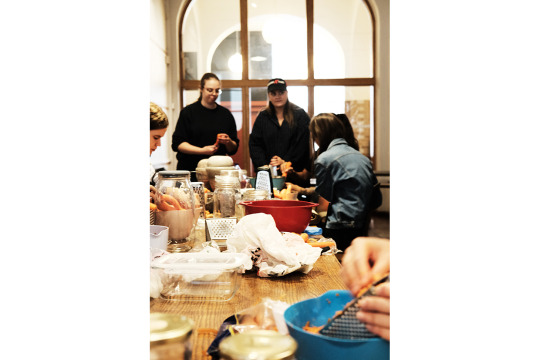
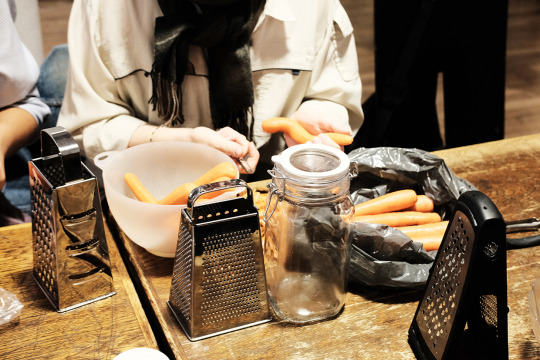
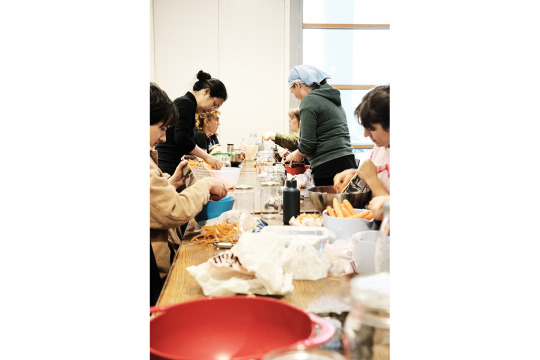
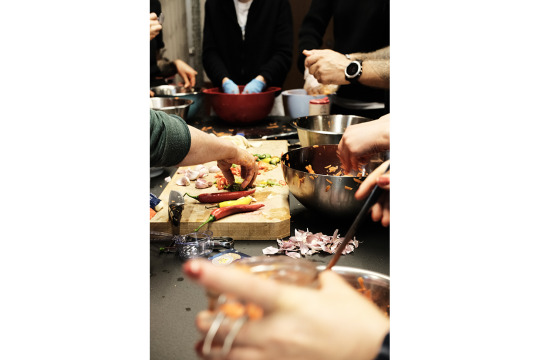
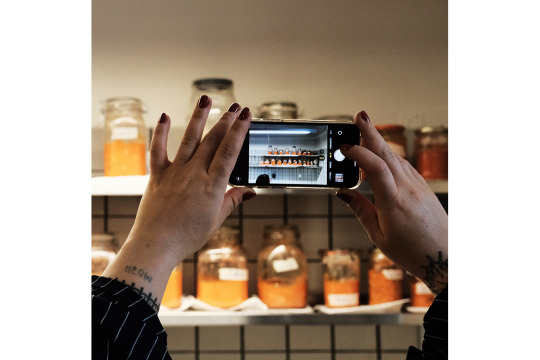
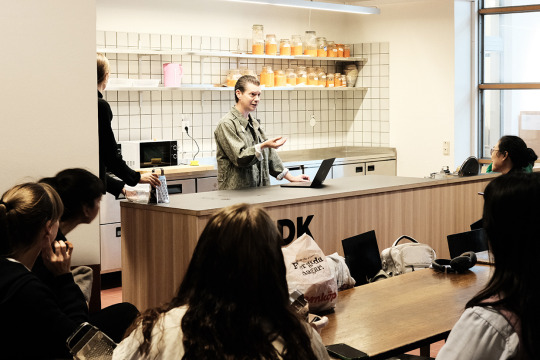
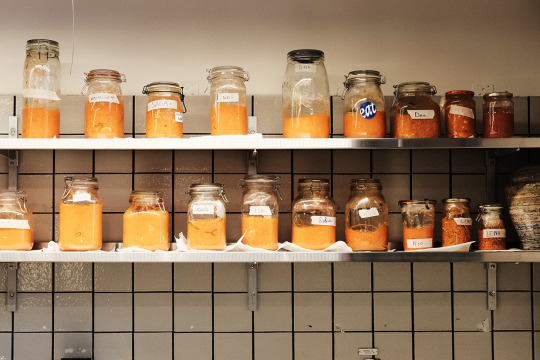
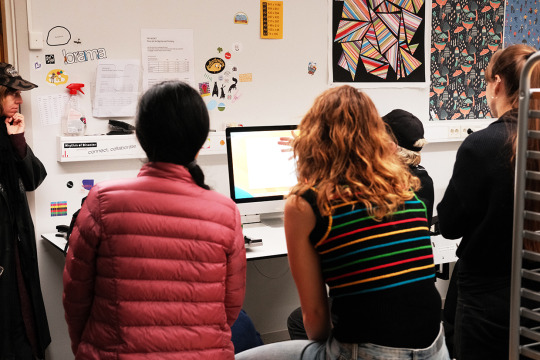
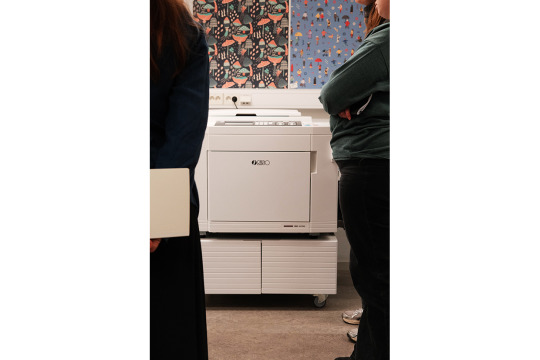
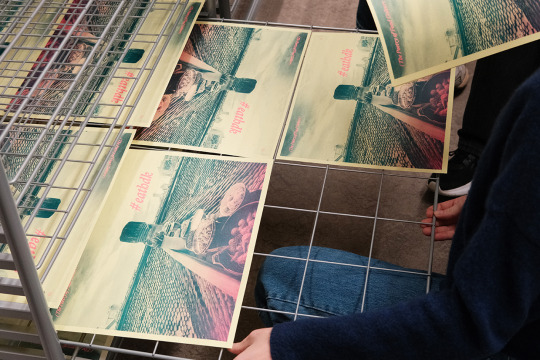
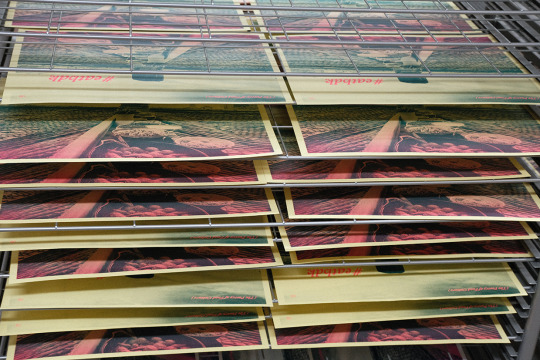
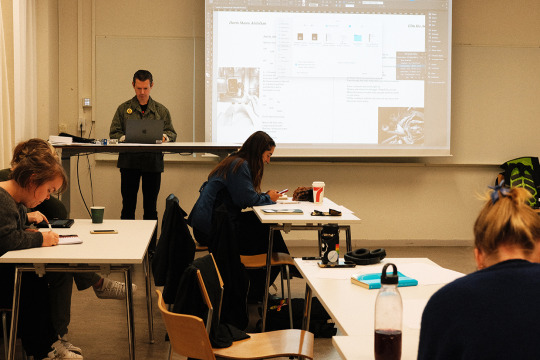
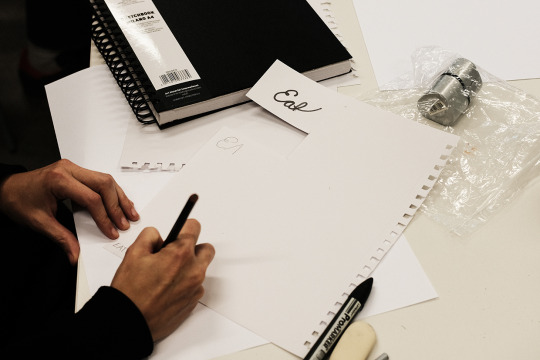
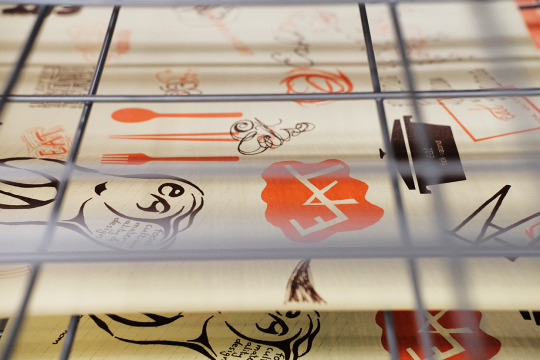
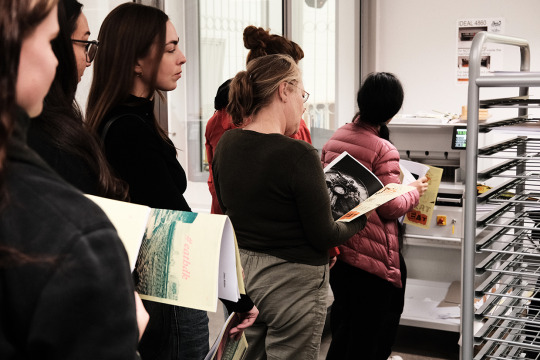
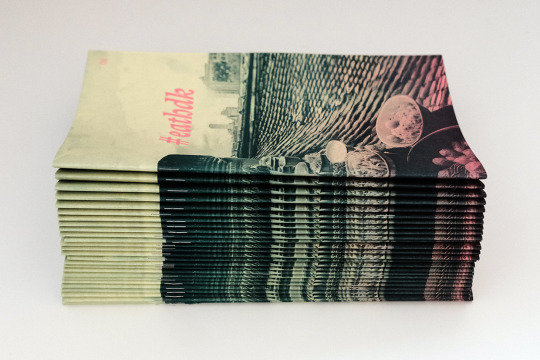
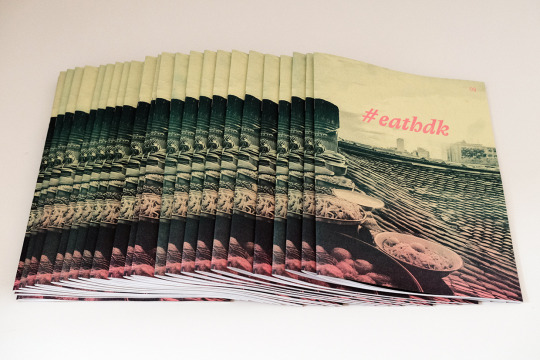
Second campus-meet with the course EAT at @hdk_valand . Two intense days revolving around the cookbook as artefact, time-capsule and carrier of identity as well as containing recipies. We all brought cookbooks to browse in and we had lecture on Publishing as artistic practice and we made the collective ”food as poetry” #eathdk book that we printed, folded, stapled and trimmed, BW pages and two-color risograph two sided cover. Thanx Arild for all the help with machines and knowledge. We also did some fermenting of carrots that is now resting on shelves in the HDK cafe for some weeks. Thanx everyone for great energy. 🌟🌟🌟 ——————————————————————- #art #cookbook #food #fermenting #hdkvaland#thisishdkvaland #thisisgu #foodculture #design #risograph#publishingasartisticpractice
1 note
·
View note
Text

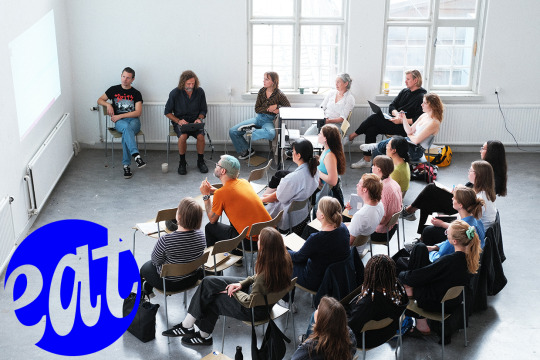
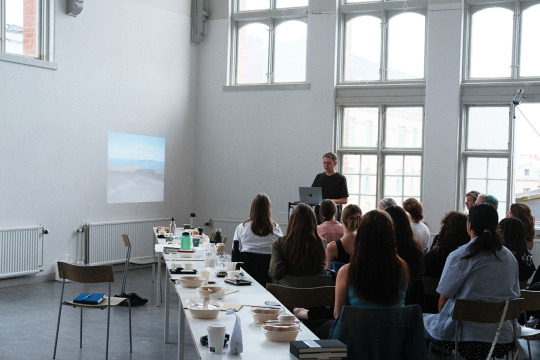
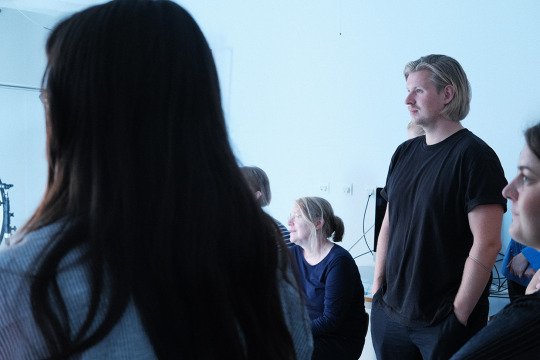
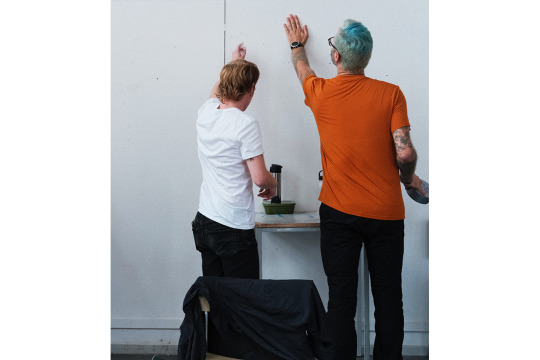
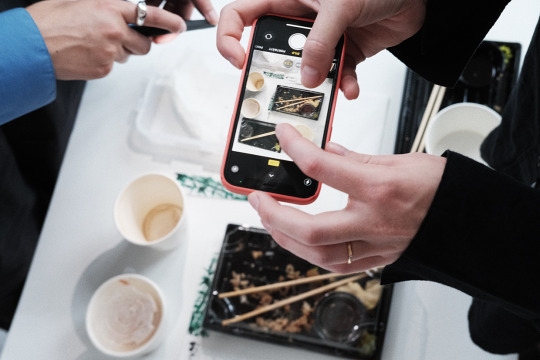
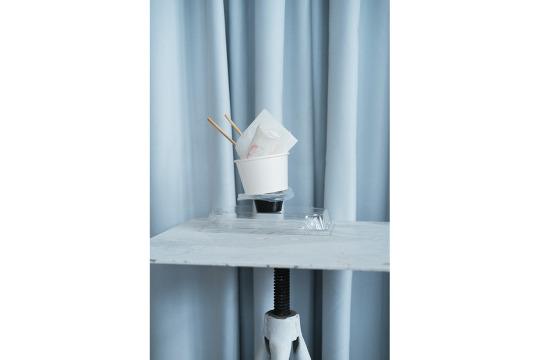
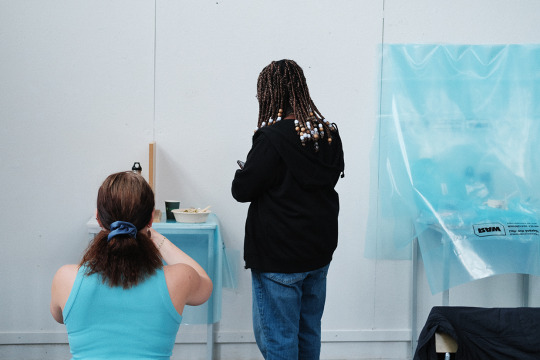
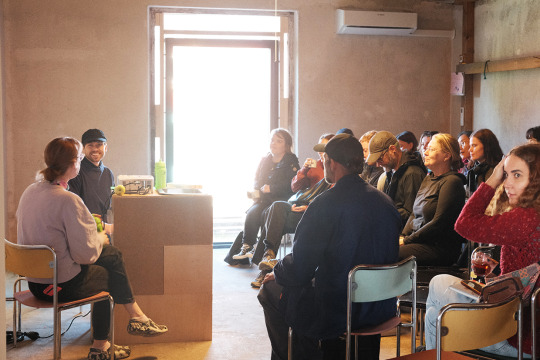
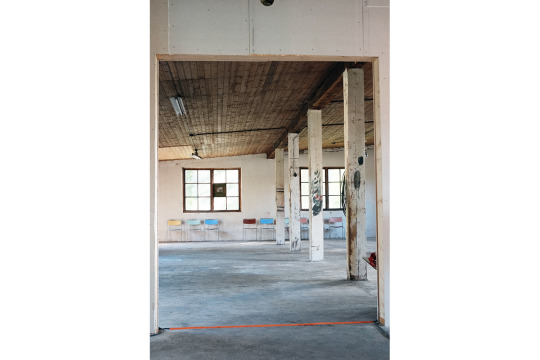
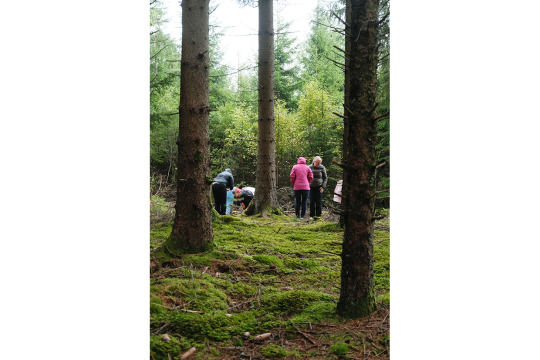

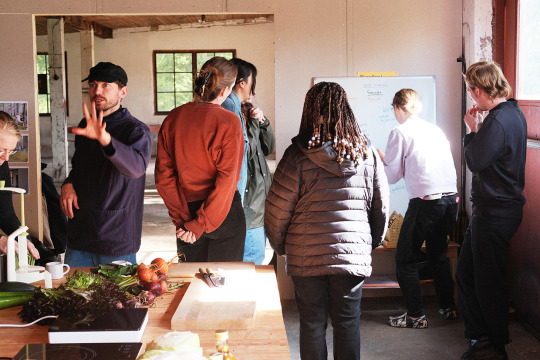
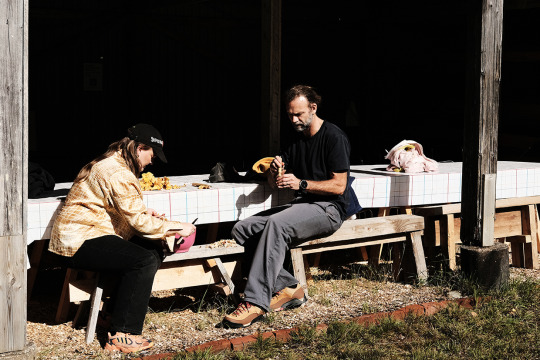
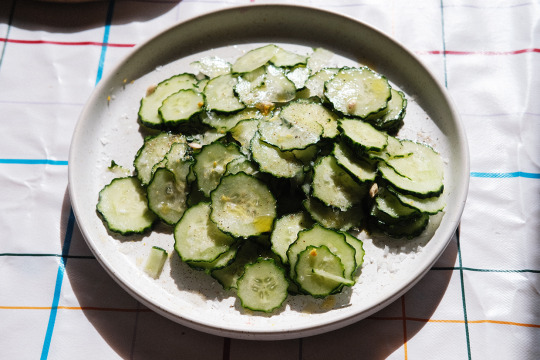
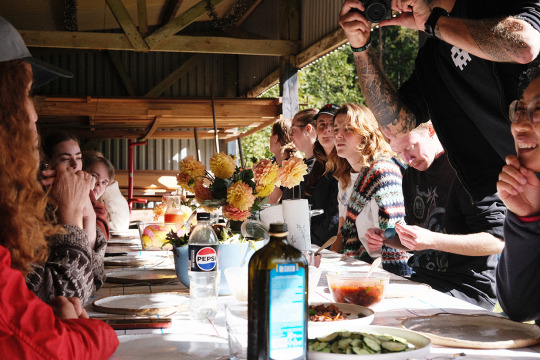
Yes! The EAT course is up and running. Great new group of students. The first two days in the course we had introduction with lecture on photo light by Emanuel Cederqvist and a leftover photoshoot in the studio at HDK-Valand. Day two we went to Ljurhallafabriken on study visit. Rachel and Nathan presented their work and the place and we cooked together.
Nest time we meet we will work with and around the cookbook + do some fermenting of carrots.
0 notes
Text
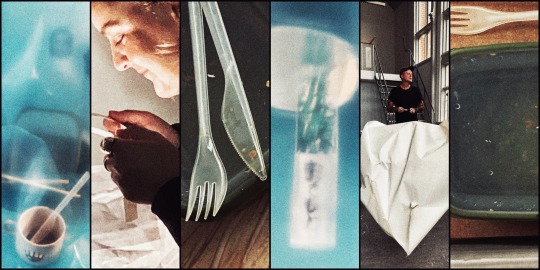
For months I’ve waited in anticipation for the start of Eat: Food Culture, Materiality, and Design. My own recent experience as a professional baker, my academic work in the social psychology of food and sustainability, and nearly twenty years of working as a graphic designer all seem to have led me to this perfect moment.
Our first day came, and with excitement reminiscent of my early teens I took a seat amongst a vibrant and varied group of new faces for our introductory lecture. I experienced this day as a vibrant blur of images, people, and conversations that now come back to me as slices and snippets, moments, flashes, and impressions that I cannot recreate, but merely suggest at with this small montage. (DM)
0 notes
Photo

BEING EATEN - Jonathan Borg’s “The Human Sushi”
Have you ever been afraid of being eaten? Probably not. Being the most powerful and superior of all species, humans never have to worry about their demise in terms of being eaten. Animals on the other hand, always live under the threat that they, at any time, could end up on our plates.
- What is food and what is body? - Which is the role of man in modern overconsumtion society? - How can humans be humble towards our surroundings and other species, which we performatively turn into food with commonplace speeches and nonverbal communications?
READ MORE: https://docdro.id/DZmEDf3
WATCH CLIP: https://www.youtube.com/watch?v=BGDR7lBHaXA&ab_channel=beefchicken1
4 notes
·
View notes
Photo
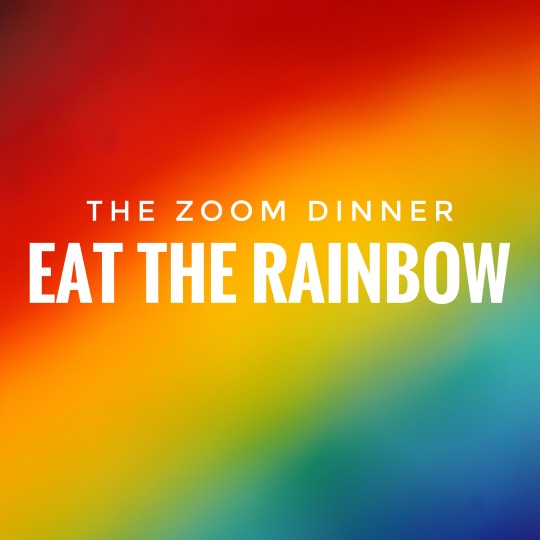
EAT THE RAINBOW – THE ZOOM DINNER
Text: Stephanie F Images: Stephanie F and dinner guests
A journey from monochrome lunch to colourful dinner. Sending digital invitations to foodie friends.Gathering in front of zoom. Overcoming technical difficulties. Quiche, pizza, bowl, prepared by ourselves or a partner. Sharing challenges and inspirations. Blue seems tricky. Decorative blueberries and boiled lentils as the way to go. Mixing languages, topics, guests. About food and beyond. Embracing the rainbow.
Invitation
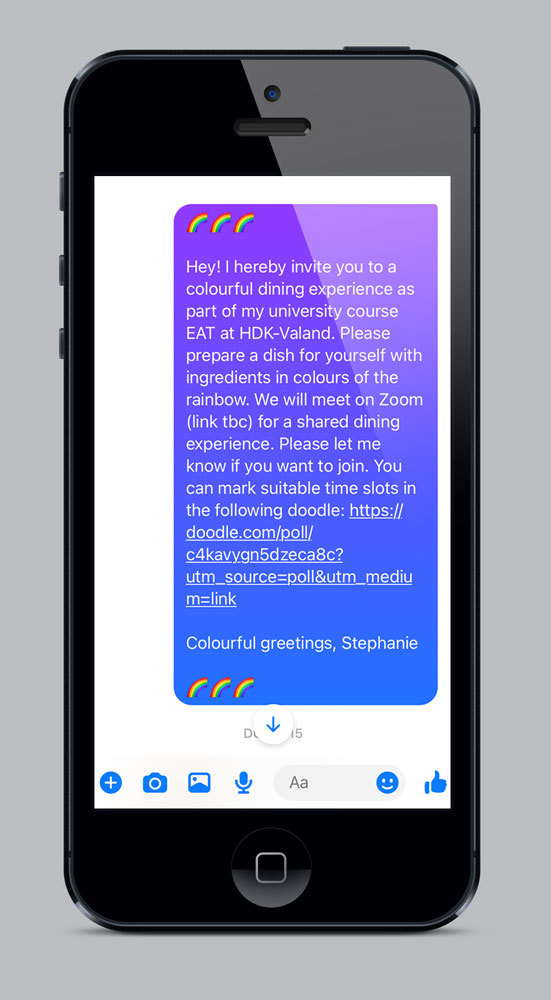
Preparation

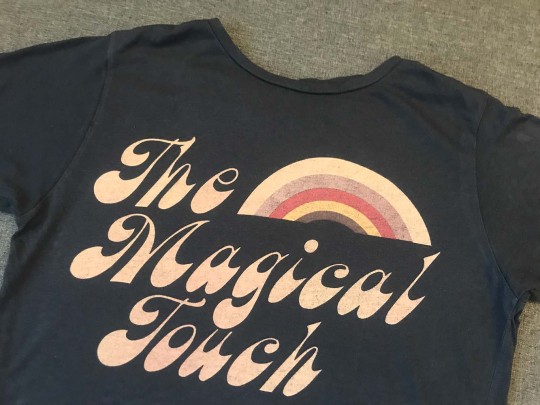
Dinner Time
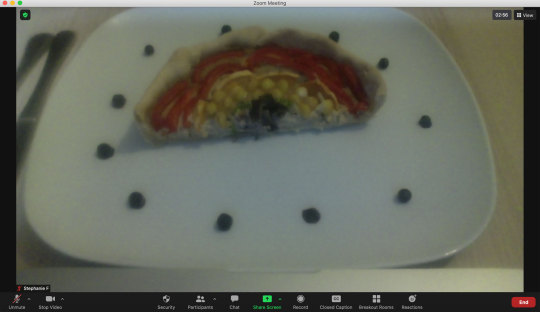
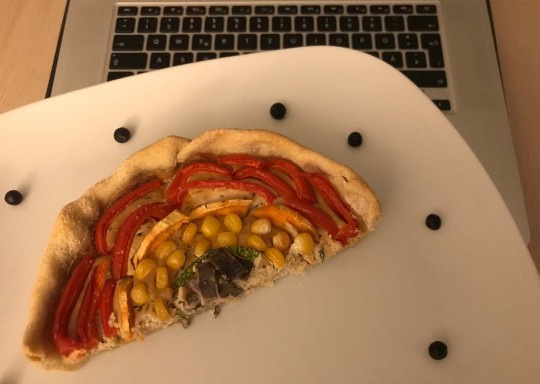
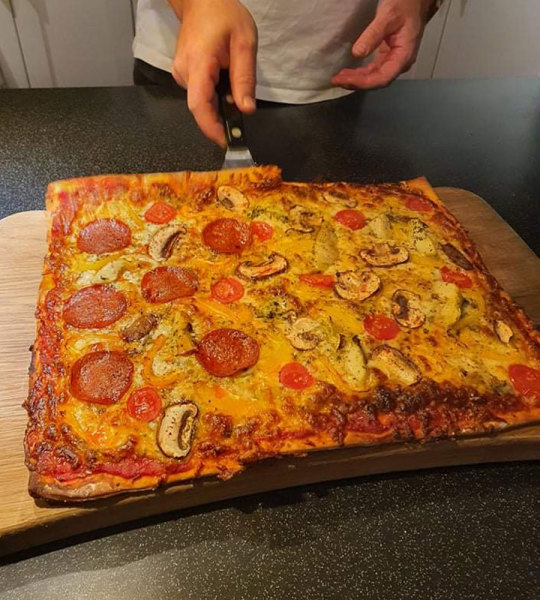
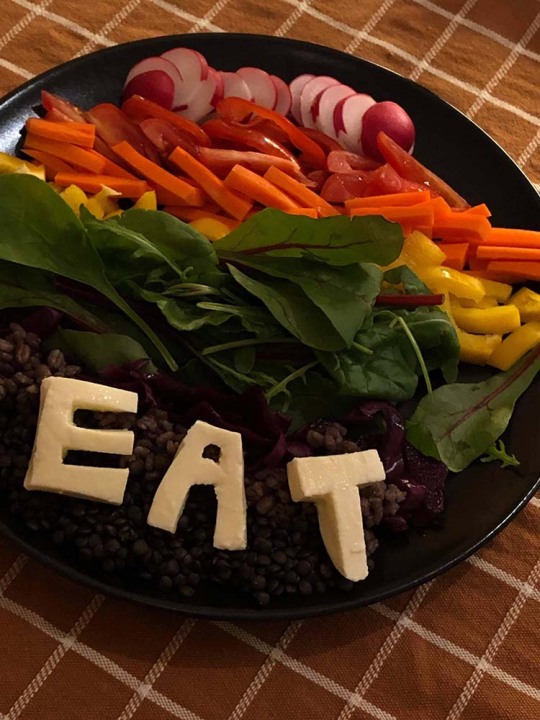
0 notes
Photo
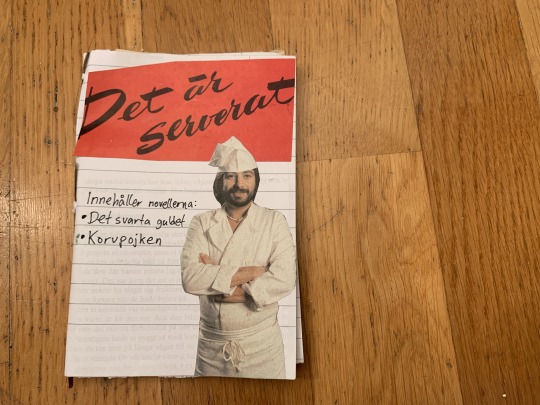
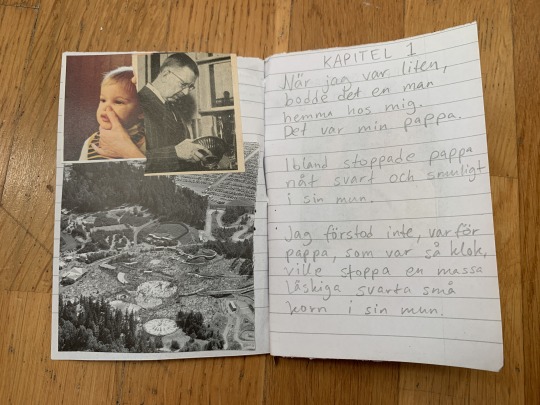
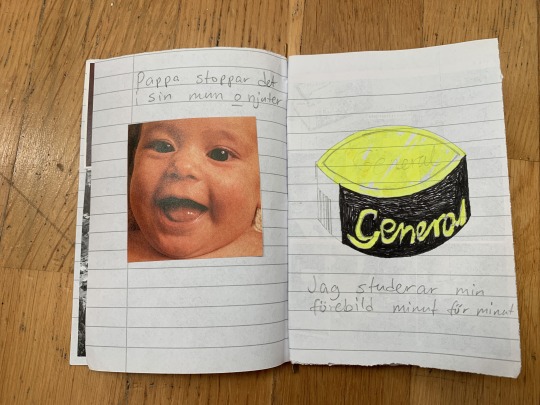
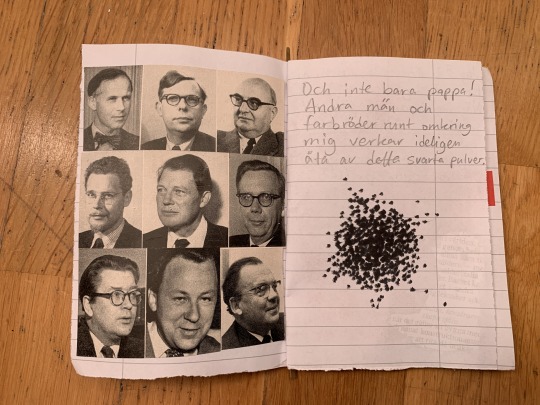
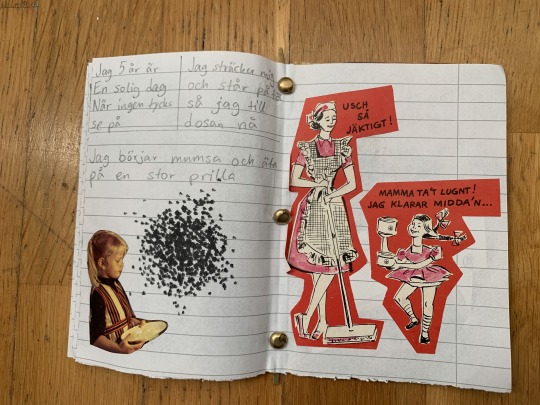
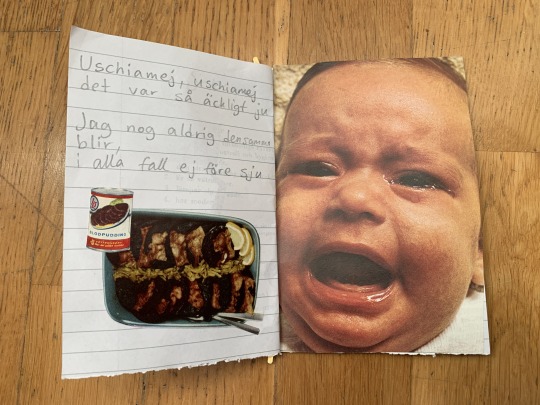
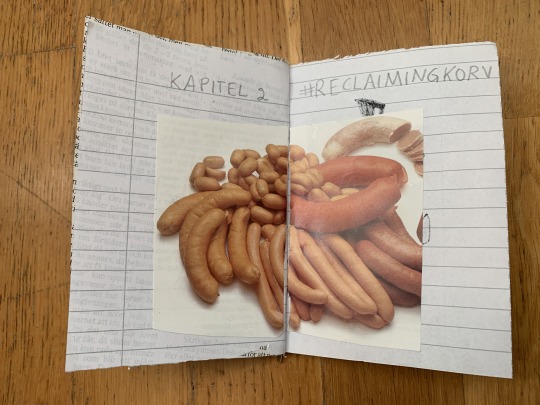
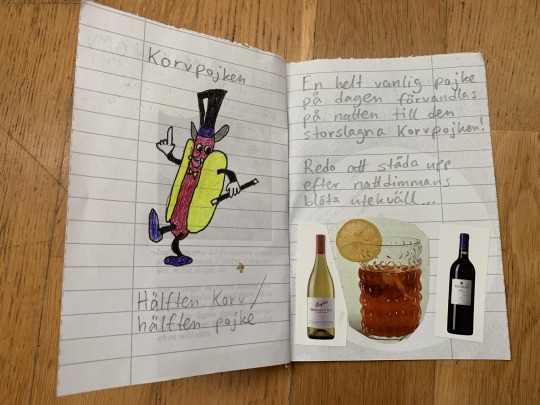
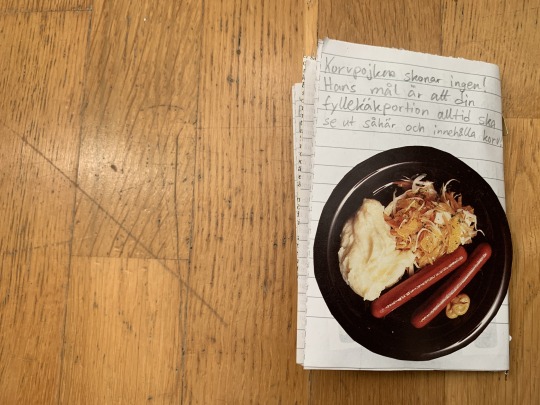
“Det är serverat”, a fanzine made by Jonathan Borg - Det svarta guldet - Korvpojken
0 notes
Photo
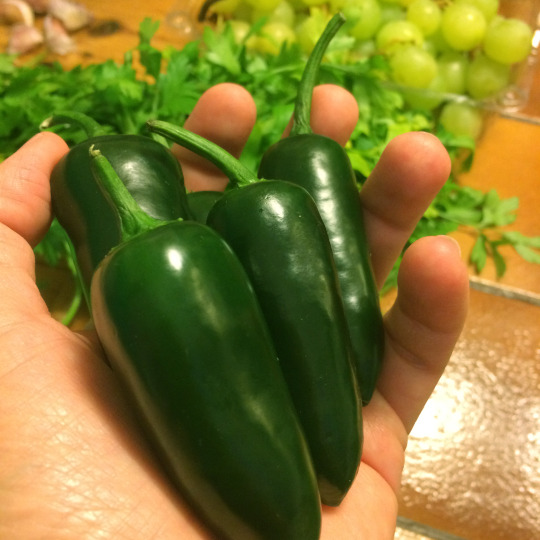
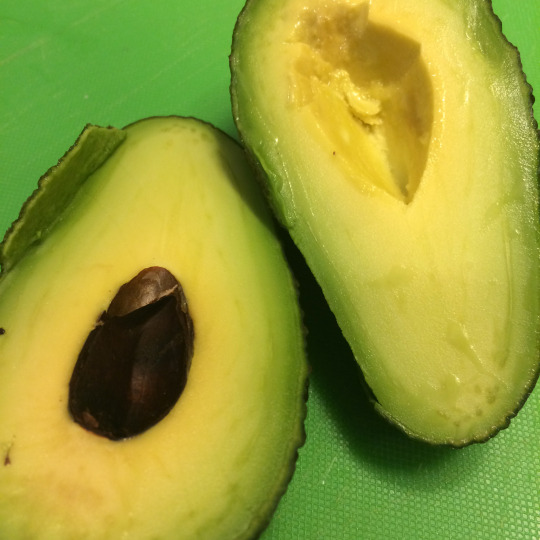
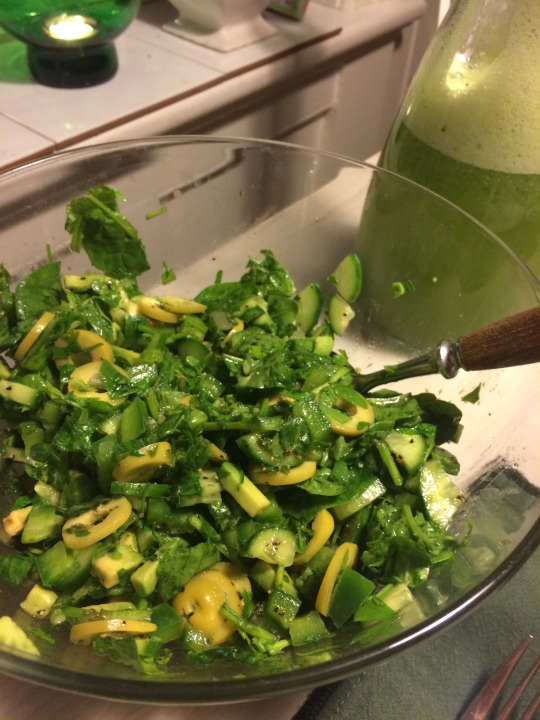
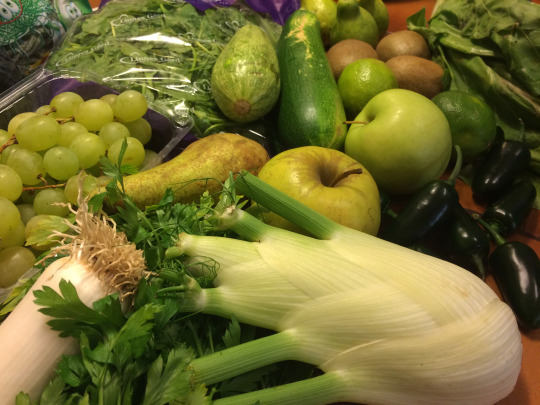

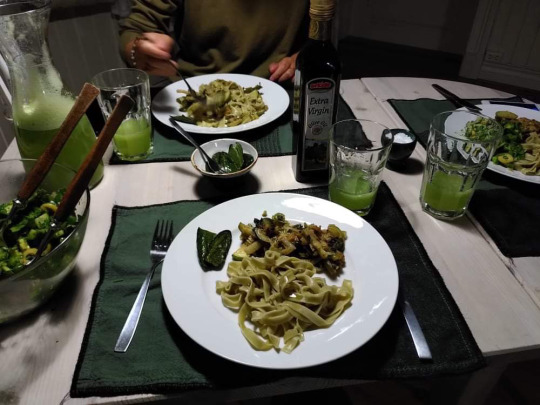
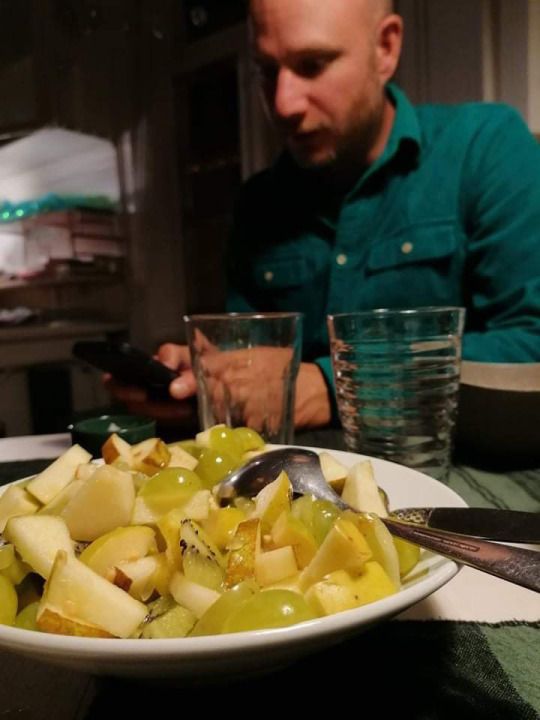
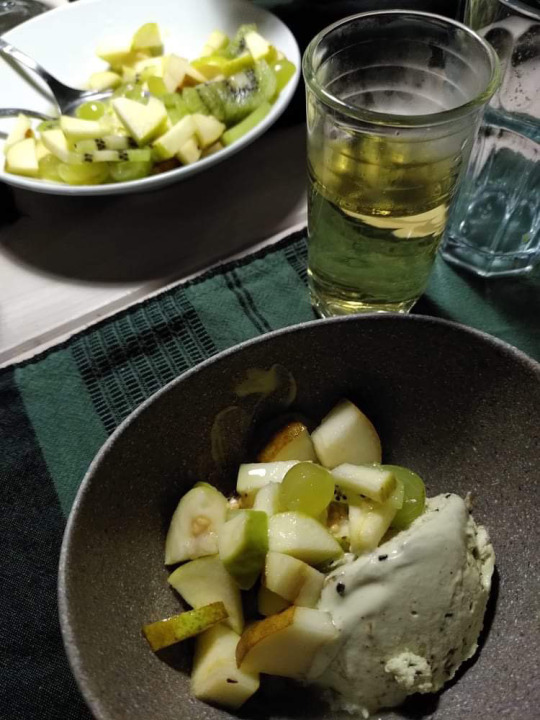
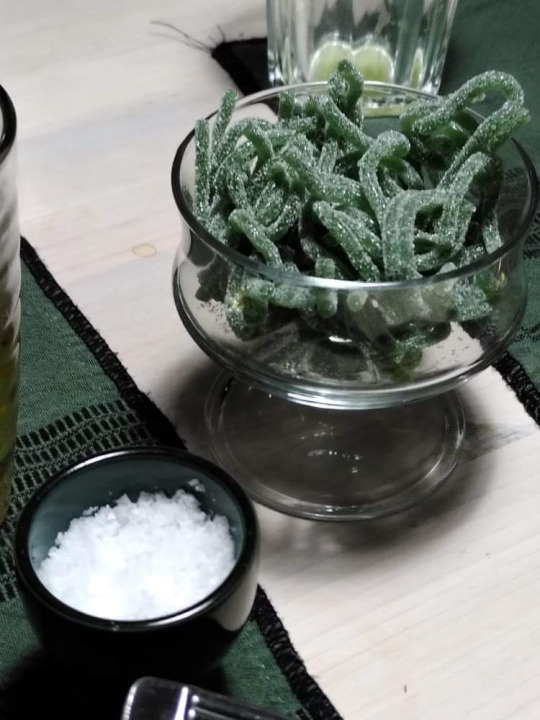
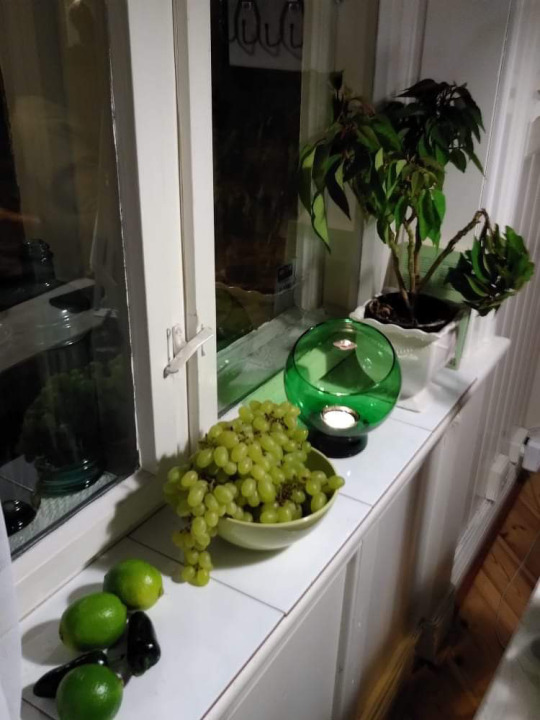
A green meal (dinner) / Yénika Castillo
Composing a monochrome meal was an attuning-of-awareness experience. Beginning with the selection of the ingredients at the store, and how the range of greens is quite wide and touching other colours like yellow or white... In which combinations they become green? With the expansion of the green palette, also comes an awareness of the meanings of green, mostly culturally given, but not totally separated from qualities that we find in the food.
What does healthy tastes like?
What is raw/cooked? What is edible/fresh/mature/dry/overripe/rotten?
How does artificial looks like?
How deep/saturated or light/bleached can a colour be?
When does green stops being green and becoming something else?
What does this setting communicates/evokes in the whole?
How does the hour of the day/natural/artificial light contribute to the setting and result?
The guests contributed with preparations and staging details, adding something of their own personalities to the whole composition.
Thanks to Stefan Andersson and Alice Tomola, for sharing the meal and contributing with details and pics.
0 notes
Photo
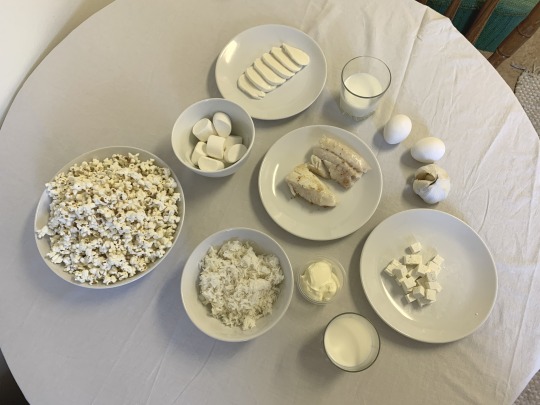
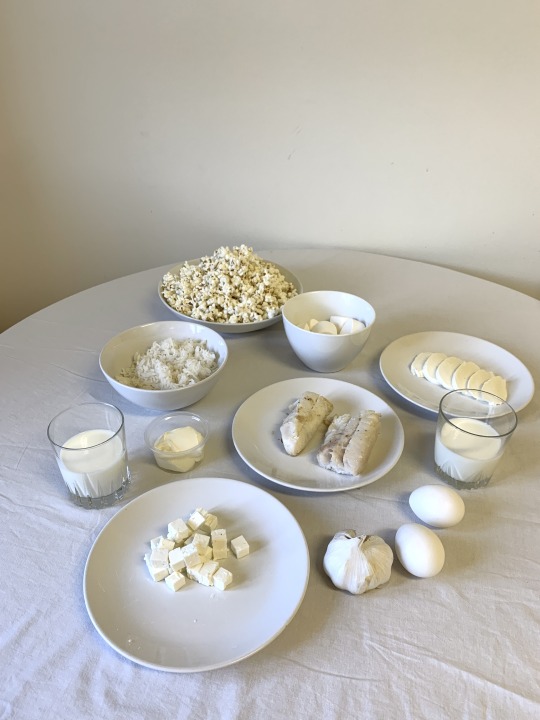
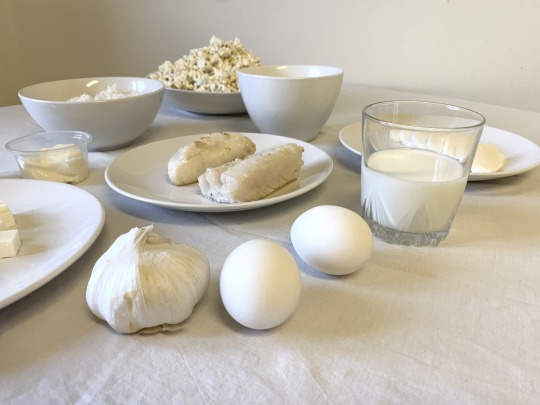
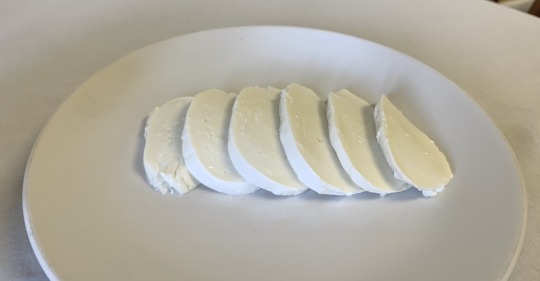
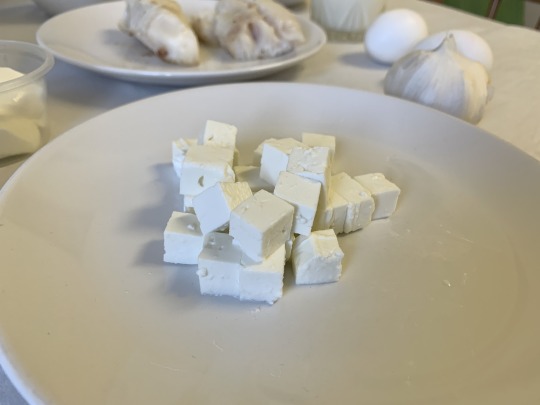
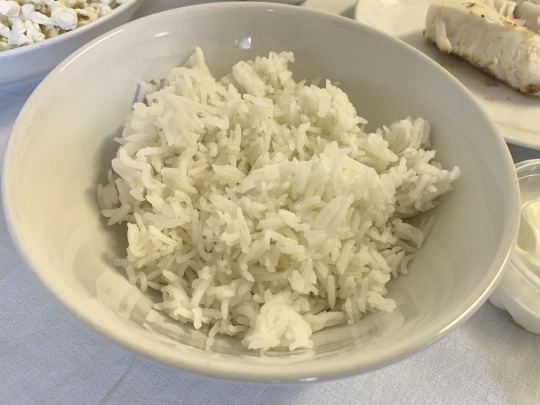
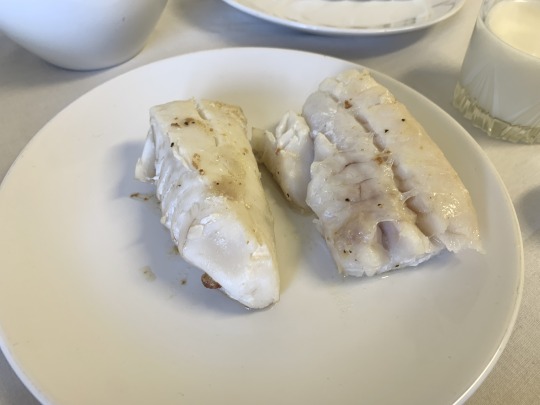
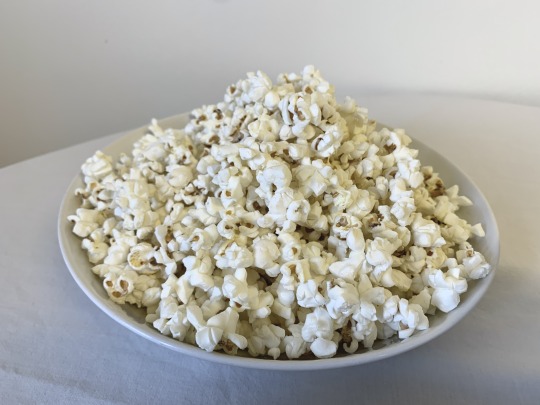
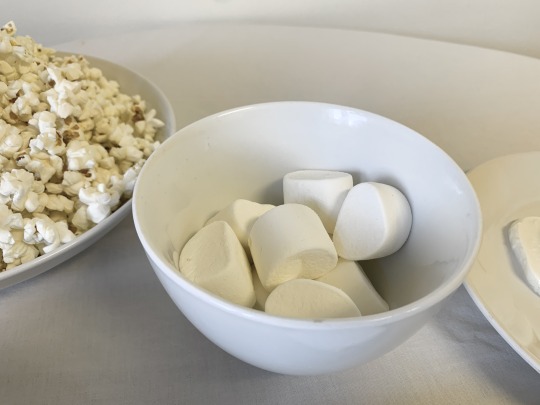
MONOCHROME LUNCH - WHITE By Jonathan Borg Recipe: - Fried cod - Rice - Mozzarella cheese - Feta cheese - Egg - Milk - Popcorn - Crème fraiche - Marshmallows It might seem strange, but it’s common for picky eaters and especially children to eat only white or beige foods and refuse most other colors of food. ▫️ At one point in human history, children needed to have certain defensive mechanisms to survive in the wild, pediatric occupational therapist Alisha Grogan states. They needed to avoid eating anything poisonous. Green foods in particular are a signal in their child brain that the food might not be safe. ▫️ White food is non-threatening. There are no dissolute colors that can signal uncertainty, danger, spicy flavours. The food is very mild and the color symbolizes a neutrality among all colors as it does not stand out. A white sheet of paper, a blank page is a kind of void, there is nothing. Nothing to take a stand on, nothing to be afraid of. It can be quite liberating in a world where all the choices we make affect our surroundings. How we transport ourselves (car, plane, public transport, walking, cycling) or how we consume food (if we buy rice, it has been shipped from the other side of the earth). The white food has a tabula rasa expression that frees the viewer and the eater from taking responsibility for their actions. You trust the white color. ▫️ But at the same time, there is a lack of romance, character and passion in this dish, it is more like an object than a meal. All sterile in its presentation, not a dish that most people wants to put in their mouths. It is an unpretentious creature. All ingredients stands alone. The cod is lying without its friends potatoes and perhaps dill. It’s rarely you see marshmallows without fire etc. ▫️ By showing this, I want to make awareness of picky eating. Stressing that signals of children not want to eat certain colour just could be a phase. But unfortunately it can also evolve into an eating disorder. So make sure to keep an eye out if your child keep insisting on not eating different coloured food for a long time. There is help to be had. Reference: https://yourkidstable.com/picky-eaters-one-color-of-food/
#lunch#monochrome#white#cod#rice#creme fraiche#popcorn#marshmallow#mozzarella#feta cheese#egg#milk#sterile#designing meal#meal#food#dish
4 notes
·
View notes
Photo

The Lunch Text and image: Stephanie F Preparing a monochrome lunch for myself. Immersing myself with my green shoes into the forest surroundings. Accompanied by my green lunchbox, providing me with homemade pea falafel on a bed of pickled zucchini.
2 notes
·
View notes
Photo
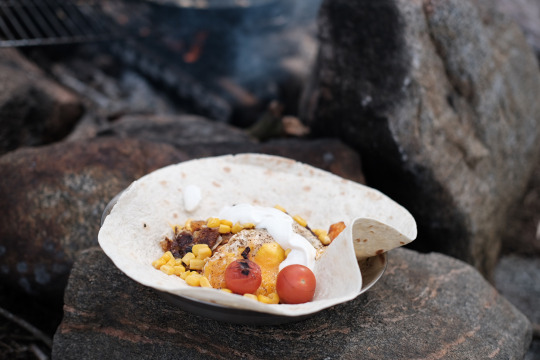
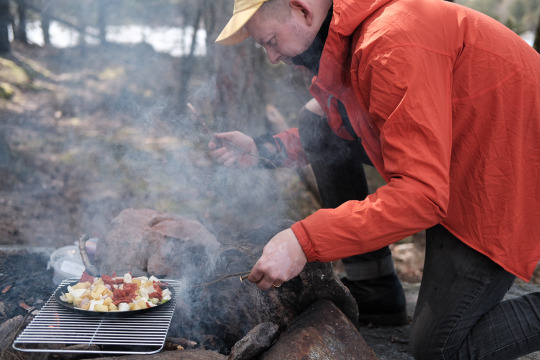
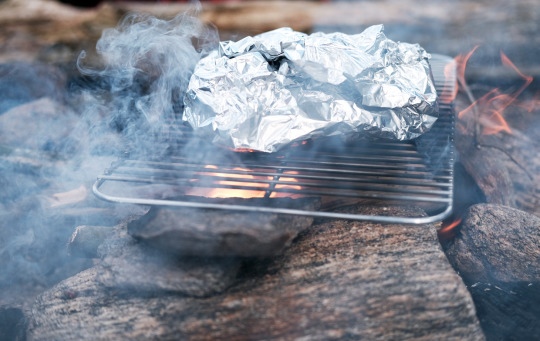
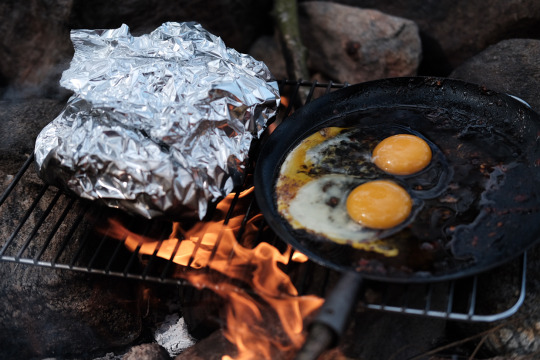
Outdoor cooking :) 2021-05-01 // Vettlefjäll
First try this spring (with some new gear) (It seems I enjoy the items for cooking almost more than the actual cooking itself).
Here is some chopped things as onions, potato, fennel, salami fried with lamb-broth, then into foil-pack with wine and fresh herbs. Eggs fried and it all served in tortilla with sour-cream.
Yes, it was good. Not spectacular, but definitely good.
On ToDo now is to find better ways of bringing things needed for the meal better packed (not in photo are 12 different jars for food + tools, stove, firewood etc etc
But at least it has started, and the day after we had outdoor pancakes.
//Mattias
6 notes
·
View notes
Photo

EAT @ HDK-Valand // Apply now
Eating can involve an infinite number of different things. It can be about survival, pleasure or stress as well as meetings, time and access. Eating has different meanings for everyone.
The course is aimed at you who is interested in the relations between design and eating. Perhaps you involved in the restaurant business, work with design or have an interest for food culture. Through basic design methods the students of the course will work with concepts of design and food culture to create collective knowledge and understanding. Together you will explore the meal as a platform for conversation, reflection, experiences and meetings. The materiality, spatiality and choreography of eating – that is, the things we use, the space we are in and how we move about – is the hub of your exploratory design work.
During the semester you will engage in a design project that has its entry point in one of the three themes of the course: Food – Body (such as the senses and norms), Food – Politics (such as power and resource allocation) and Food – Artefacts (such as function and materials)
Apply here (English) ---> EAT Sök här (Svenska) ---> ÄTA
0 notes
Video
youtube
Is this waste? Text and video: Klara M
During the autumn I´ve been exploring what we consider as food waste and along the way I created some GIF:s that became part of my project. Here´s a simplified version. Enjoy!
0 notes






